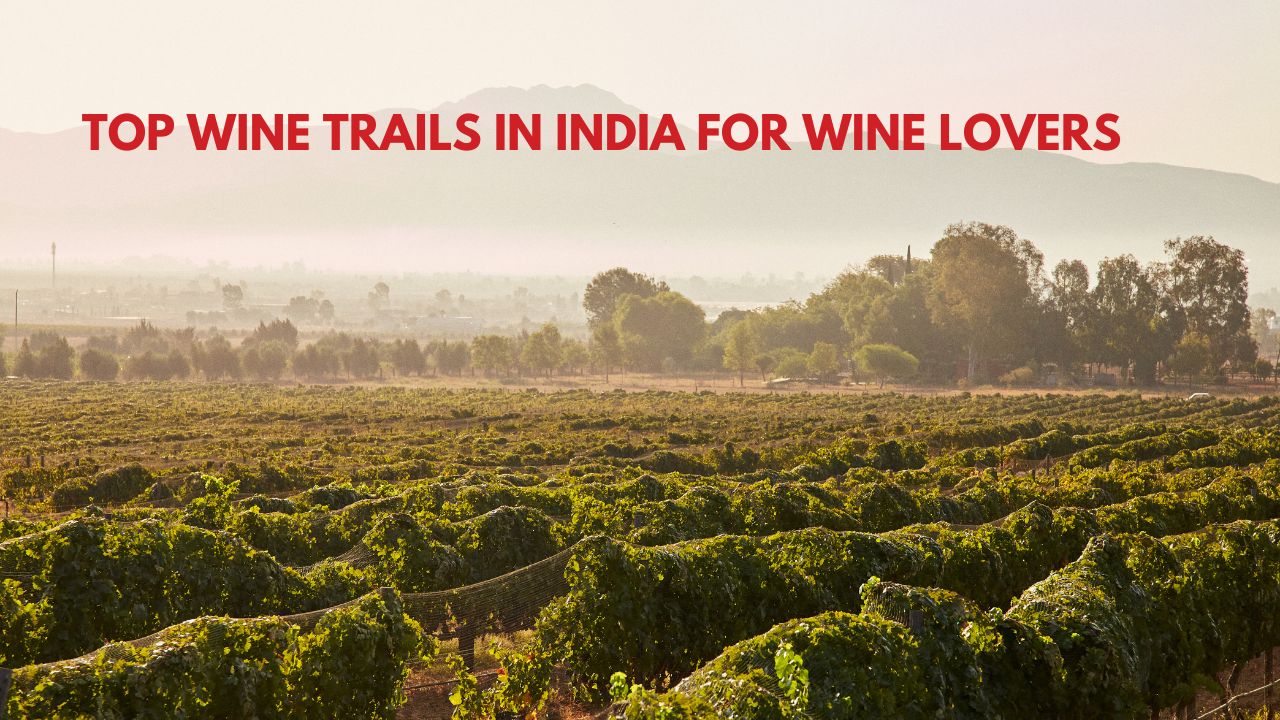Last weekend, I was chatting with my friend Sarah who just got back from a $4,000 wine tour in France. She kept going on about the “authentic vineyard experience” and how she discovered these “hidden gems.” Meanwhile, I’m sitting there thinking – girl, I had the same experience right here in India for less than what you spent on flights alone.
Here’s what bugs me: everyone assumes good wine only comes from Europe or California. We’re completely ignoring the fact that India has been quietly building an incredible wine scene that most people don’t even know exists. And honestly? Some of these Indian wines are giving international brands a serious run for their money.
The Wine Trails in India scene isn’t just about drinking wine (though that part’s pretty great). It’s about discovering something completely unexpected in your own backyard and having those “wait, this is actually amazing” moments that you’ll be talking about for months.
Why I’m Obsessed with Wine Trails in India

Look, I was skeptical too. My first thought when someone mentioned Indian wine was probably the same as yours – can it really be that good? Then I actually visited Sula Vineyards on a random weekend trip, and it completely changed my perspective.
The thing about Wine Trails in India is that you’re not just another tourist being shuffled through a scripted tour. These winemakers are genuinely excited to share their story because they’re still proving themselves. You get real conversations, behind-the-scenes access, and tastings that feel personal rather than commercial.
Plus, let’s be real about the money. A weekend wine trail in Maharashtra costs less than a single dinner at some fancy Napa Valley restaurant.
Discovering the Best Wine Trails in India
Maharashtra – Where Wine Trails Really Took Off
I’ve done wine tours in four different countries, and Maharashtra’s Nashik region holds its own against any of them. The landscape reminds me of parts of California, but without the pretentious attitude or tourist trap pricing.
What surprised me most was the variety. You’ve got everything from boutique family operations to larger estates, each with completely different approaches to winemaking.
Sula Vineyards

Okay, so Sula is kind of the poster child for Indian wine, but there’s a reason for that. I went in expecting typical tourist stuff, but their head winemaker spent an hour explaining why they chose specific grape varieties for Indian soil conditions. Nerdy? Yes. Fascinating? Absolutely.
Their Sauvignon Blanc honestly shocked me – crisp, clean, and nothing like what I expected from an Indian winery. The vineyard tour includes this cool underground cellar where you can taste wine directly from barrels. Pro tip: go during weekdays if possible. Weekends get pretty crowded.
York Winery

This place feels more intimate than Sula. It’s family-owned, and you can tell. The owner’s son personally walked us through their tasting room and explained their philosophy about letting the grapes express the local terroir rather than trying to copy European styles.
Their red blend caught me completely off guard – complex, balanced, and paired perfectly with the local cheese they served. The mountain views don’t hurt either.
Grover Zampa Vineyards

Here’s where things get interesting. Grover Zampa brought in French consultants but kept everything rooted in Indian growing conditions. The result? Wines that taste distinctly Indian but with that refined European technique.
I tried their reserve collection, and honestly, some bottles could easily sell for double the price in international markets. Their story about surviving early skepticism and building credibility one bottle at a time really resonated with me.
Karnataka’s Hidden Wine Trails
Most people skip Karnataka for wine, which is a mistake. The elevation around Bangalore creates this unique microclimate that produces completely different flavor profiles than Maharashtra.
Grover Vineyards Ltd

This is where Indian wine actually started getting serious recognition. Their vineyard near Nandi Hills has been around since the late ’80s, so they’ve had time to really figure out what works.
What I loved most was their no-nonsense approach. No fancy marketing gimmicks – just solid wine and straightforward explanations of their process. Their Cabernet Sauvignon reminded me why I fell in love with wine in the first place.
The Mountain Experience in Northern Wine Trails
Alpine Wineries

Okay, this one’s special. Making wine at high altitude in Himachal Pradesh sounds crazy, but it works. The temperature variations create these intense flavor concentrations that you won’t find anywhere else in India.
The drive up is an adventure itself, and tasting wine with snow-capped mountains in the background feels pretty surreal. Their limited production means you’re trying something genuinely rare.
Real Talk About Planning
Wine Trails in India work best between January and March when the weather’s perfect and harvest activities are happening. Most places offer basic accommodation, but I’d recommend staying in nearby towns for better food options.
Book directly with wineries when possible – you’ll often get better rates and more personalized experiences than going through tour operators in Delhi.
Trust me on this – India’s wine scene is having a moment, and getting in early means you’ll have bragging rights when everyone else catches on. The question isn’t whether these trails are worth exploring. It’s which one you’ll hit first.

